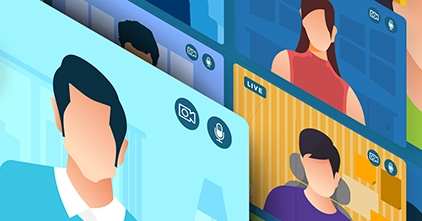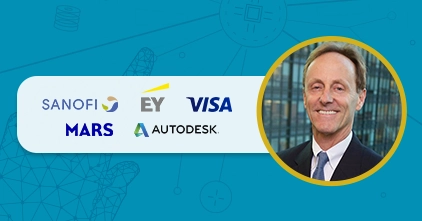Digital learning is here to stay! Only 5% of organizations say that their learning strategy, investment, and resourcing will go back to what it was before. Plus with 70% of the workforce projected to be working remotely at least five days a month, most training will surely be done remotely too.
In today’s changing work set-up, is your organization capable of training and engaging your employees remotely? Read this guide to successfully ‘switch’ from F2F to digital learning.
STEP 1: Identify your stakeholders’ needs and goals.
Identify the skills gaps.
Establish your learning objectives, and know the current situation about your employees’ current skill levels, and capabilities.
Set clear training goals.
Identify specific goals you want your digital learning program to address.
Select the appropriate digital learning modalities.
Choose from a variety of options including scheduled one-on-one digital training, small-group virtual classes, and self-paced eLearning.
Install a method of evaluation.
You should know how the digital learning program has improved the skill levels of your learners while also looking into how you can further improve the training program (design, delivery, etc.).
STEP 2: Ensure personalization in learning.
A. Streamline content curation.
Some of the most common content you can curate are:
- Industry news and developments
- Best practices and tips
- Specific trends and research
- Specific learning courses or programs
B. Provide job-specific training courses.
Examples of specific training courses:
- Role-specific courses
- Industry-focused courses
- Business communication and leadership courses
C. Harness the power of AI through adaptive learning.
D. Consider getting reputable and reliable content partners.
For example, goFLUENT partners with Harvard Business Review, The New York Times, AFP, and World of Business Ideas for its language and business content).
E. Tap managers to drive engagement and foster a learning culture.
STEP 3: Factor in engaging human interactions.
One of the greatest benefits of online learning is that you can quickly deliver training courses whenever convenient and wherever your employees may be. More importantly, digital learning reduces the required learning time to approximately 25% to 60% of what’s required in traditional F2F learning.
But still, some learning leaders think that switching to digital learning means that the ‘human touch’ and immersive learning factors are completely removed.
Don’t worry! You can explore live learner-trainer interaction through:
- 1-on-1 lessons through video call
- An Interactive whiteboard and chatroom
- Small-group lessons wherein learners within and across teams in your organization can collaborate (for example, Microsoft Teams)
- Virtual classrooms where learners can discuss and learn with others
- Interactions between learners and certified learning consultants
- Personalized reporting and writing
STEP 4: Think like a marketer.
Borrow concepts and practices from marketing to endorse your online learning program to your executives, learners, and other stakeholders.
Here are ways you can market your digital learning initiatives:
- Writing and sending out emails
- Running competitions
- Creating forums and discussion threads
- Sharing learner testimonials
STEP 5: Evaluate your training program’s impact through learning analytics.
Follow these steps to leverage training metrics for digital learning:
A. Gather data and generate reports.
Other ways to gather through data is through:
- Self-assessments
- Feedback mechanisms
- Surveys and performance evaluations
B. Look out for trends. Observe trends based on your data and reports. This can help you understand what happened and why certain phenomena occurred.
C. Predict and analyze based on trends, then intervene.
D. Based on patterns and trends you’ve observed, do necessary actions and improve your training design and delivery.
Sources: goFLUENT Blog, Fosway Group, Vox, eLearning Industry




